Haotian Song
RMG: Real-Time Expressive Motion Generation with Self-collision Avoidance for 6-DOF Companion Robotic Arms
Mar 13, 2025Abstract:The six-degree-of-freedom (6-DOF) robotic arm has gained widespread application in human-coexisting environments. While previous research has predominantly focused on functional motion generation, the critical aspect of expressive motion in human-robot interaction remains largely unexplored. This paper presents a novel real-time motion generation planner that enhances interactivity by creating expressive robotic motions between arbitrary start and end states within predefined time constraints. Our approach involves three key contributions: first, we develop a mapping algorithm to construct an expressive motion dataset derived from human dance movements; second, we train motion generation models in both Cartesian and joint spaces using this dataset; third, we introduce an optimization algorithm that guarantees smooth, collision-free motion while maintaining the intended expressive style. Experimental results demonstrate the effectiveness of our method, which can generate expressive and generalized motions in under 0.5 seconds while satisfying all specified constraints.
Deep-learned speckle pattern and its application to ghost imaging
Dec 28, 2021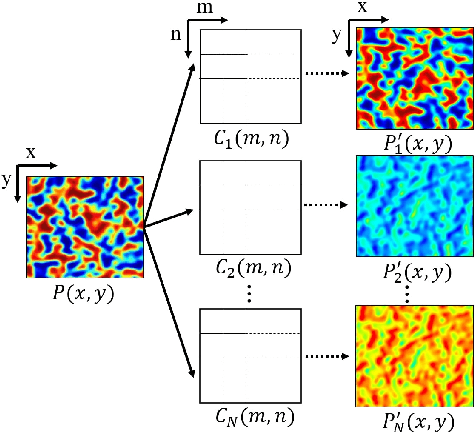
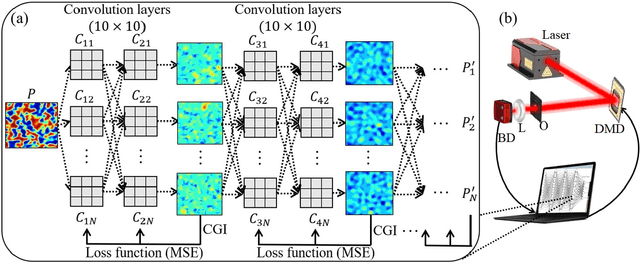
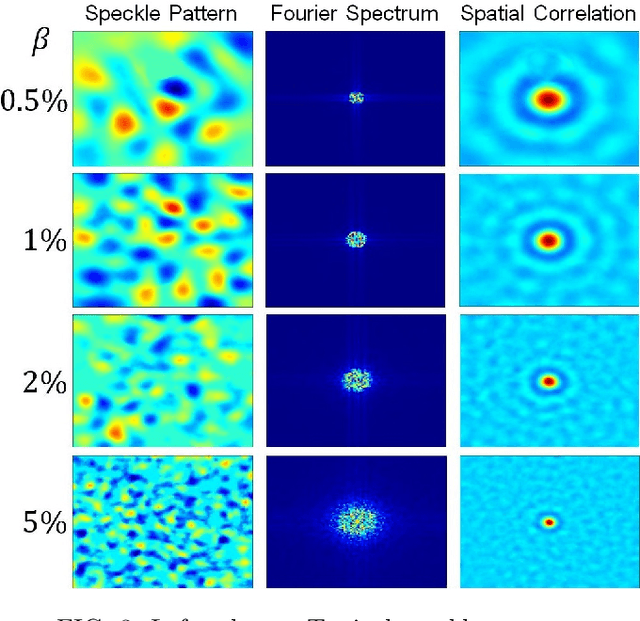
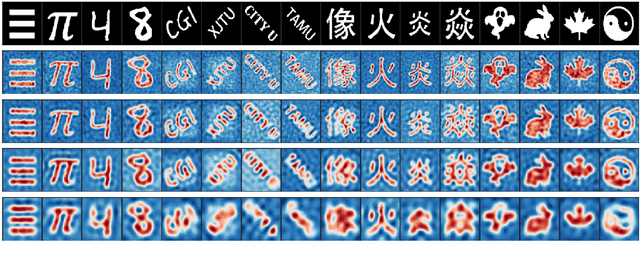
Abstract:In this paper, we present a method for speckle pattern design using deep learning. The speckle patterns possess unique features after experiencing convolutions in Speckle-Net, our well-designed framework for speckle pattern generation. We then apply our method to the computational ghost imaging system. The standard deep learning-assisted ghost imaging methods use the network to recognize the reconstructed objects or imaging algorithms. In contrast, this innovative application optimizes the illuminating speckle patterns via Speckle-Net with specific sampling ratios. Our method, therefore, outperforms the other techniques for ghost imaging, particularly its ability to retrieve high-quality images with extremely low sampling ratios. It opens a new route towards nontrivial speckle generation by referring to a standard loss function on specified objectives with the modified deep neural network. It also has great potential for applications in the fields of dynamic speckle illumination microscopy, structured illumination microscopy, x-ray imaging, photo-acoustic imaging, and optical lattices.
0.8% Nyquist computational ghost imaging via non-experimental deep learning
Aug 17, 2021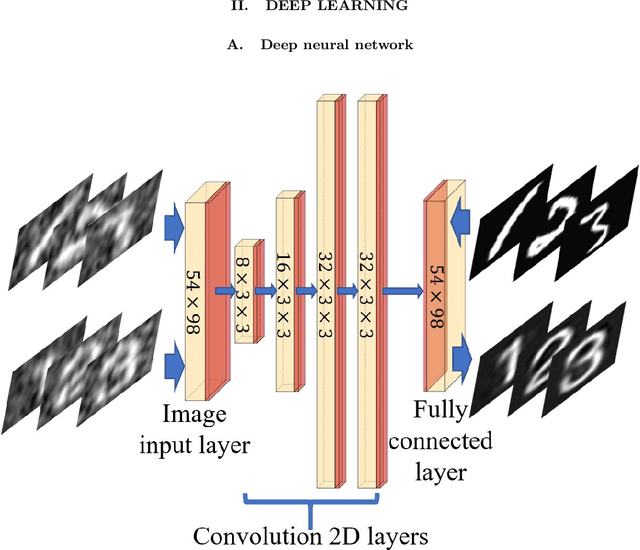
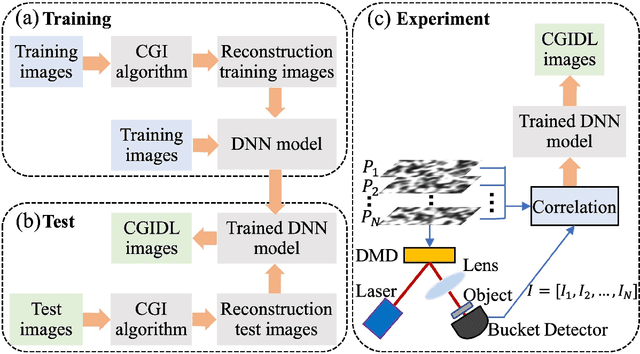
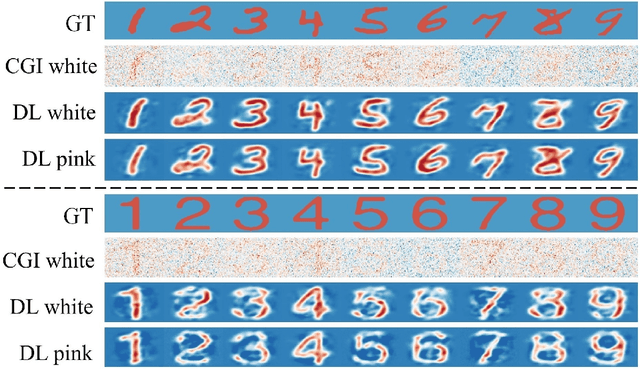
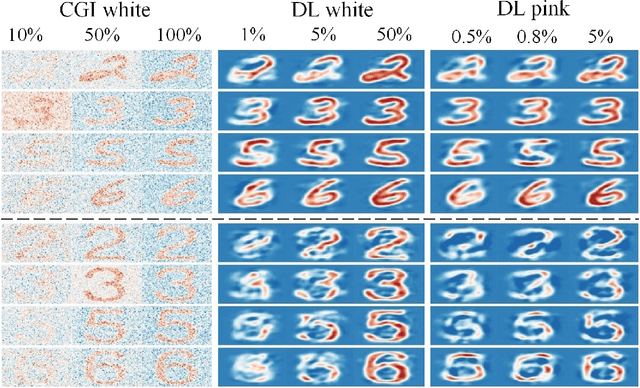
Abstract:We present a framework for computational ghost imaging based on deep learning and customized pink noise speckle patterns. The deep neural network in this work, which can learn the sensing model and enhance image reconstruction quality, is trained merely by simulation. To demonstrate the sub-Nyquist level in our work, the conventional computational ghost imaging results, reconstructed imaging results using white noise and pink noise via deep learning are compared under multiple sampling rates at different noise conditions. We show that the proposed scheme can provide high-quality images with a sampling rate of 0.8% even when the object is outside the training dataset, and it is robust to noisy environments. This method is excellent for various applications, particularly those that require a low sampling rate, fast reconstruction efficiency, or experience strong noise interference.
 Add to Chrome
Add to Chrome Add to Firefox
Add to Firefox Add to Edge
Add to Edge